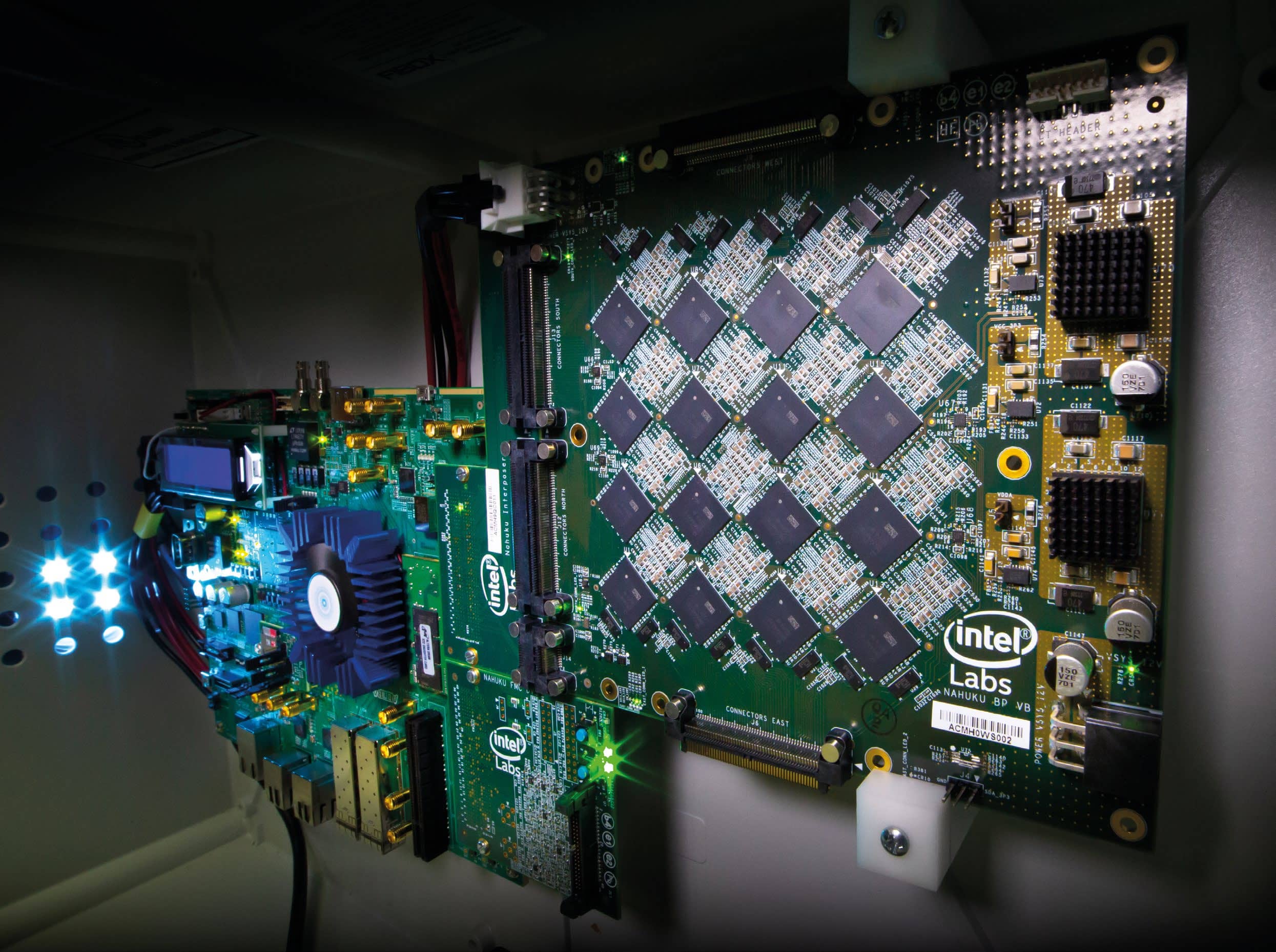
Intel loves a good codename. Who remembers Dragontail Peak? Or Lizard Head Pass? Or even 2008’s White Salmon? Great days. All of those refer to motherboards, but Pohoiki Beach is different – it’s a new way of building computers that’s based on the human brain. Neuromorphic computing – literally ‘nerve shaped’ – uses insights from neuroscience to create chip architectures.
By simulating the way human brains work in silicon, calculations can be carried out faster while using less energy. The training of neural networks can be carried out more efficiently too, with only one viewing of an object necessary for the net to recognise it forever.
Mike Davies, director of Intel’s Neuromorphic Computing Lab, sees it more clearly, “Neuromorphic computing entails nothing less than a bottom-up rethinking of computer architecture,” he says. “The goal is to create chips that function less like a classical computer and more like a human brain. Neuromorphic chips model how the brain’s neurones communicate and learn, using spikes and plastic synapses that can be modulated based on the timing of events. These chips are designed to self-organize and make decisions in response to learned patterns and associations.”
Which all sounds a bit Cyberdyne, but we’re sure this will be fine. The goal is that one-day neuromorphic chips may be able to learn as fast and efficiently as the brain, which still far outperforms today’s most powerful computers. According to Intel, neuromorphic computing could lead to advancements in robotics, smart city infrastructure, and other applications that require continuous learning and adaptation to evolving data.
This story is from the July 2020 edition of PC Gamer.
Start your 7-day Magzter GOLD free trial to access thousands of curated premium stories, and 8,500+ magazines and newspapers.
Already a subscriber ? Sign In
This story is from the July 2020 edition of PC Gamer.
Start your 7-day Magzter GOLD free trial to access thousands of curated premium stories, and 8,500+ magazines and newspapers.
Already a subscriber? Sign In

JET SET RADIO
A vibrant Tokyo-like city with an anti-establishment attitude.

BLUE DAWN
INTEL graphics cards have become a genuine contender. How, and why?

WIRELESS GAMING MICE
I challenge you to spot the difference between these wireless rodents and their wired counterparts.

FOILED AGAIN
EN GARDE! is a brief yet riotous piece of swashbuckling nostalgia

PURE MAGIC
BALDUR'S GATE III is a dream RPG that was worth the 23-year wait

THE BEST MECH GAMES ON PC
From anime mecha to rusty 100-ton war machines, the best mech games for giant robot lovers

MECH MY DAY
MECHWARRIOR 5: CLANS is bringing a narrative focus and intricate, handcrafted missions back to the storied series.

HOMEWORLD 3
The space RTS aims to please with its War Games mode

LORDS OF THE FALLEN
World-hopping glow-up

WARHAMMER 40K: SPACE MARINE 2
Chaos is winning right now, I fear